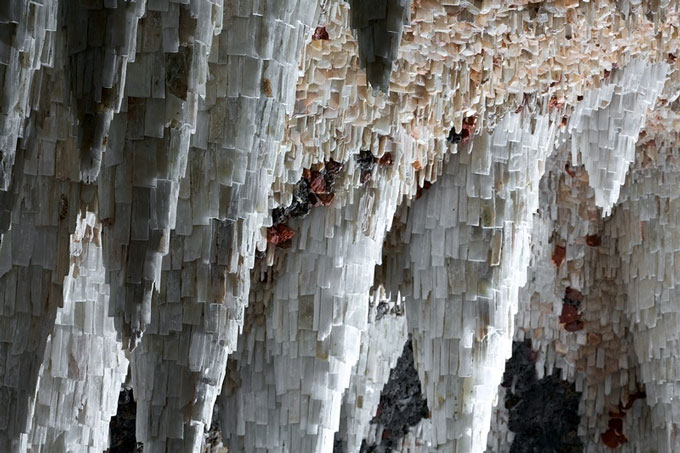The rare crystal grotto at Painshill in Surrey has been restored to its former, glimmering glory.
 Once again a sparkling centrepiece within the historic garden, the recreation of this folly has combined extensive research of archive material and archaeological data, with landscaping and expert craftsmanship.
Once again a sparkling centrepiece within the historic garden, the recreation of this folly has combined extensive research of archive material and archaeological data, with landscaping and expert craftsmanship.
Thousands of crystals such as calcite and quartz, including originals recovered from archaeological works, have been skilfully embedded with lime mortar onto a framework of inverted wooden cones, to
recreate the dazzling stalactite effect of the original grotto. The restoration cost £747,400, which was awarded to Painshill Park Trust by private trusts and the Heritage Lottery Fund.
Inspired by the grottoes in Italian Renaissance gardens, Charles Hamilton who created Painshill, commissioned the celebrated grotto maker, Joseph Lane, to construct this folly for a sum of £8,000 (the equivalent of £600,000 today) in 1760.
The newly-restored grotto was officially opened by Lady Lucinda Lambton, a powerful crusader for England’s forgotten architectural heritage.
“What shimmering strangeness,” commented the writer, photographer and broadcaster, who placed the last crystal in the grotto’s decoration. “Indeed, there is no more shimmeringly strange spot in the United Kingdom than the restored-to-its-full-glory Grotto at Painshill. Designed as part of a great landscape inspired by art, it has delighted all those who have seen it. In the 18th century, Elizabeth Montagu, creator of the ‘bluestocking’ brigade of brilliant women, wrote that its beauty beggared all description. In the 19th century, Jane Austen wrote to her sister Cassandra that she was ‘very much pleased’ with the place. It was not to last; by the 20th century the grotto was described as heartbreakingly ruinous. Today, in the 21st century, its singular splendour can be relished once again. Three brilliant cheers!”
The 158-acre landscape garden was inspired by Renaissance art from Hamilton’s his Grand Tours across Europe: he created a sequence of breathtaking and surprising vistas. The landscapes, originally created between 1738 and 1773, form living works of art into which Hamilton placed follies for dramatic effect. Charles Hamilton’s ambitions, however, exceeded his funding, and he was forced to sell the estate in 1773. Painshill was held by a series of private owners over two centuries and ultimately fell into dereliction through neglect after the Second World War.
The crystal grotto at Painshill is now open at weekends between 1pm-4pm.
Related articlesCountryside drives in Scotland
|
Click here to subscribe! |





 © 2024
© 2024